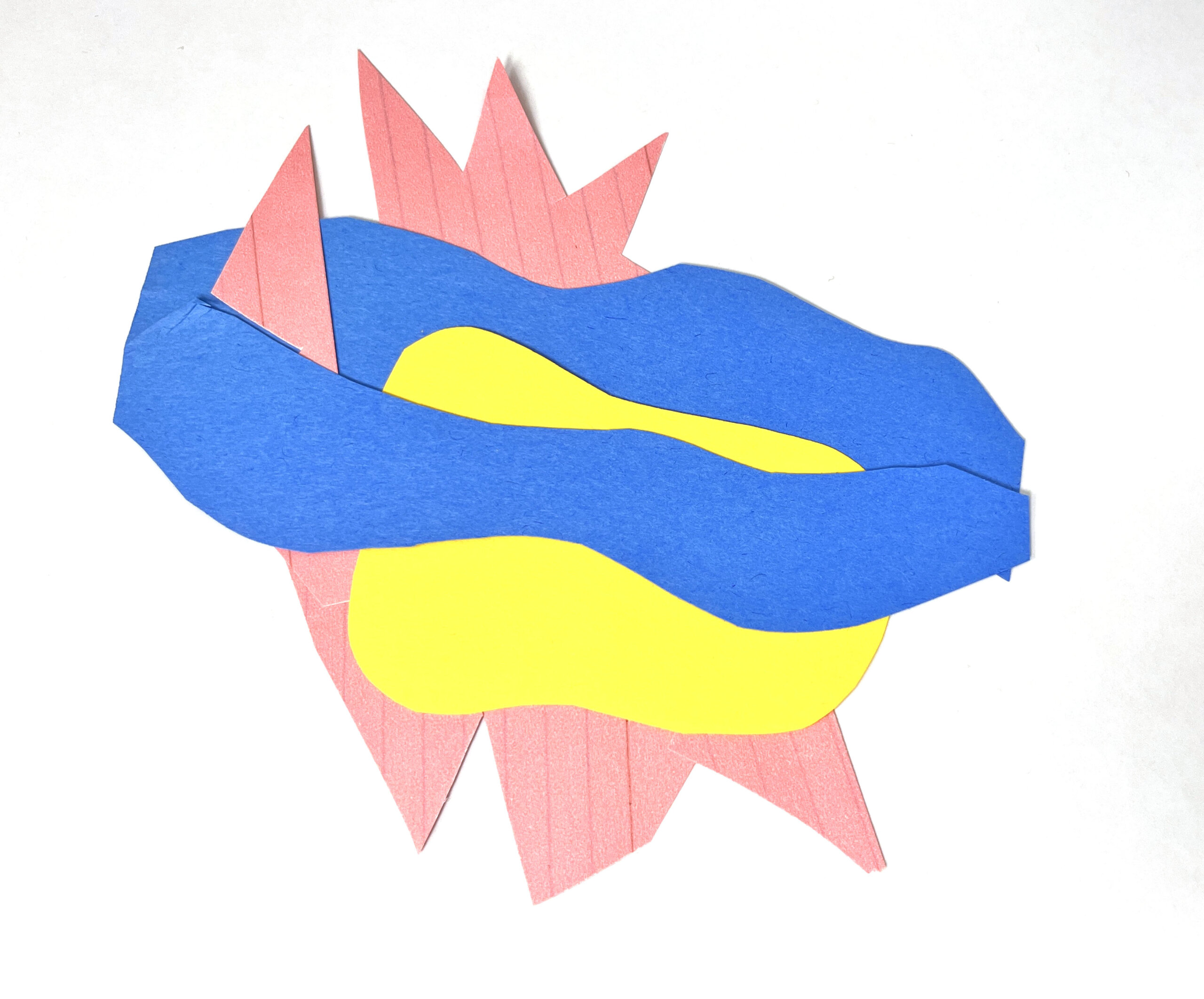Overview
In this lesson, you will create shapes to describe your feelings.
Materials and Tools
- Feelings!
- A variety of paper
- Scissors
- Glue or tape
Activities
Feelings and Shapes
Sunflowers stand up straight and turn their heads towards the sun.
What feeling do you get from looking at a sunflower?


Sometimes it can be hard to describe what we feel with words. Another way to describe our feelings is to use shapes.
These shapes are like waves that weave in and out. What kind of feeling do you think they describe?


Sometimes we feel angry. Sometimes lonely. Sometimes confused.
And sometimes all three at once.
A shape with spikes and zigzags might show the prickly feeling of all three of these feelings together.


Sometimes, we might feel exhausted. This big, curvy blob shape feels exhausted. It weighs down the other feelings with its heaviness.
Sometimes one feeling covers up another.

What feelings do these shapes make you think of?
Can you find a shape that looks:
- Happy?
- Excited?
- Sad?
- Bored?

What if we arrange the shapes of our feelings into a collage?
We can try a variety of compositions. We can rearrange these feelings any way we want.
How will you arrange the shape of your feelings?

If you have glue or tape, you can attach your shapes to paper.
You can use a paintbrush to spread the glue.
Turn over each piece that you want to glue down and spread the glue along the edges.


Turn your work around until you find the angle that looks right to you. Some compositions look better upside down or on their side.

Creating a Collage
1) How do you feel today? Think about a feeling you have been having lately. Can you describe it? What shape does it take?
2) From the paper you have collected, select one that reflects your feeling.
3) Using scissors to cut, or tearing with your hands, make the shape of your feeling. It can be a geometric or organic shape.
4) Continue making shapes until you have a collection of feeling shapes.
5) Arrange the feeling shapes into a composition that connects with your present moment. You can rearrange them as many times as you like.
6) If you have glue or tape, you can attach the pieces to paper and make a collage.
7) Describe the shape of your feelings to a friend or caregiver. If you are older, you can write down your thoughts.
Credits
Written By:
Denise Schatz, Artist Instructor
Lesson Development:
Julie Applebaum, Senior Director
Andrea Burgay, Director of Digital Learning
Copyright © 2023 Studio in a School NYC LLC

